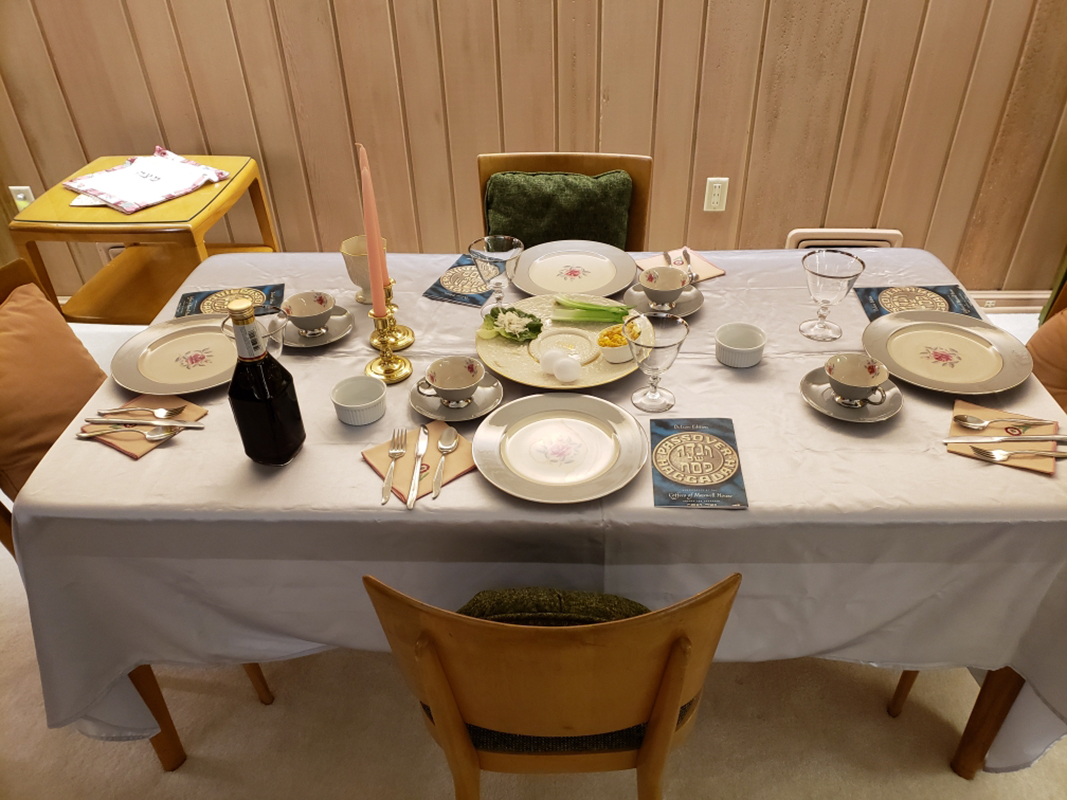For years, the only holiday showcased in the Johnson County Museum’s All-Electric House has been Christmas, but at the end of March, that changed. The 1950s home is set up for a seder through May 1.
The new display came from discussions where museum staff were considering “what other communities were here in Johnson County in the 50s and 60s and what would they celebrate,” said Anne Jones, curator of collections for the museum. “… Passover’s a family celebration. It makes sense to have it set up in the 50s house.”
To create the display, Jones asked Abby Magariel, educator/curator of the Michael Klein collection at The Temple, Congregation B’nai Jehudah, for help.
“We formed it together based on the objects that we have in the Klein collection. I approached it knowing the All-Electric House is this fantastic artifact, and I was thinking about how a family would celebrate Passover in such a house,” Magariel said.
Ultimately, the collection lent the museum two seder plates, one created by local artist Irma Starr in 2009, and one done by Israeli artists Avraham and Pnina Gofer in the 1960s. Nearby is a 1960s haggadah featuring watercolors painted by artist Ben Shahn in the 1930s.
It was Magariel’s suggestion that the museum use those ever-present Maxwell House Coffee haggadot on the table.
In addition to the items from the Klein collection, which are under glass beside the house, the Passover table also features B’nai Jehudah’s own seder plate and Elijah’s cup alongside the Manischewitz wine.
The museum has had a Jewish exhibit once before, in 1994 or 1995, Jones said, but it wasn’t a holiday-specific one. She said the research from that exhibit also helped inform this one.
“It’s not anything big or major in terms of number of items, but I think just having it in the museum and having it as part of the house for us is significant in the sense we’re trying to reach out to other communities and partner with organizations to talk about other community histories that are out there,” Jones said.
Jones has been trying to find ways to incorporate the experiences of many different ethnic and religious groups into the larger narrative of the county’s history that the museum presents.
“I think Jewish visitors to the museum will appreciate seeing a Jewish family represented in the All-Electric House. It’s always welcome to find Jews and Jewish traditions represented in places where they are not typically represented,” Magariel said.
Although it doesn’t get into too much detail, the exhibit’s informational panels do address the restrictions Jewish people faced in finding housing in Johnson County, specifically mentioning the Kroh Bros., whose 1945 restrictive covenant for the Leawood Estates excluded anyone who had one Jewish grandparent.
Magariel and Jones both expect that the exhibit will be interesting to many groups of people, not just Jewish visitors.
“I think that anybody approaching the exhibit will be engaged by the seder table and interested to see the formal place settings. They’ll find it a familiar one. No matter their religion, families always gather around a meal,” Magariel said. “That happens all the time. That’s universal. That’s something I think anybody will find familiar and comforting.”
The Johnson County Museum, 8788 Metcalf Ave., is open 9 a.m. to 4:30 p.m. Monday through Saturday. Admission is $6 for adults, $5 for seniors 60 and older and $4 for children ages 1-17. The Passover exhibit will be up until May 1.



